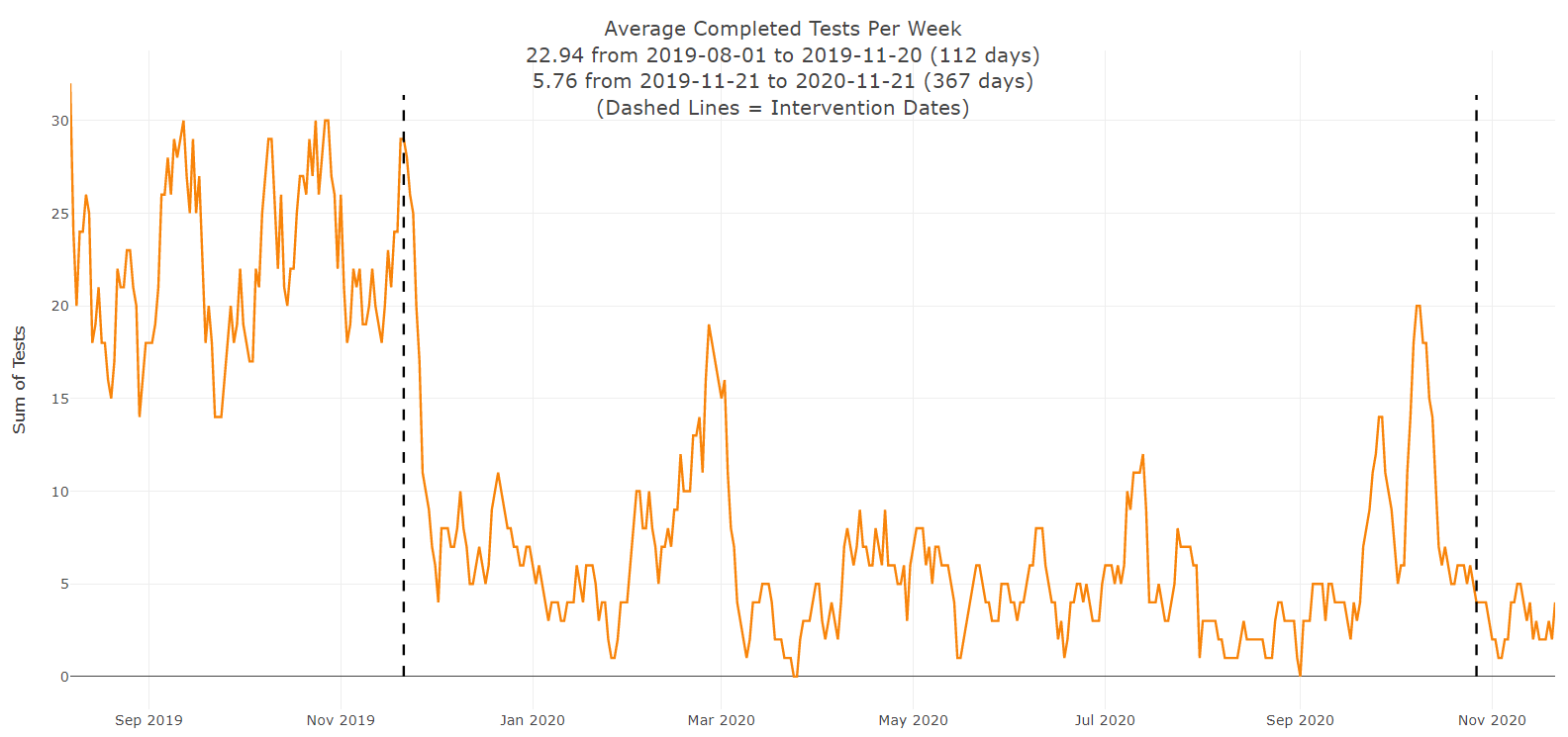Background: Inpatient serum folate testing was recognized as a low-value practice by the Choosing Wisely campaign in 2015. Despite this recognition, clinicians at our hospital system continue to use this test in a standard workup for conditions such as anemia, dementia and altered mental status. Shifting practice patterns away from serum folate testing remains a challenge. Our hospital system wastes over $800,000 annually on serum folate testing. Furthermore, effective quality improvement interventions within safety net settings remain to be explored.
Purpose: We propose two nudge interventions to reduce inpatient serum folate testing in hospitalized patients.
Description: In an urban, safety-net health system we deployed an electronic health record-based nudge intervention using a non-intrusive advisory warning across ten hospitals (Figure 1). Subsequently, on the medicine service at a single hospital within this system, we created an educational initiative culminating in the signing of a public commitment letter for hospitalists and housestaff. To empower clinicians not to order serum folate tests, our second intervention took advantage of their desire to align with best practices as well as peer accountability and professionalism to encourage sustained changes in ordering patterns. Hospitalists and residents signed a public letter which was displayed prominently throughout workrooms as reminders of the commitment clinicians made. We measured inpatient serum folate orders on the medicine service at our hospital from 8/1/2019 – 11/20/2019 and found an average of 22.94 completed orders per week. Over the subsequent period from 11/21/2019-11/21/2020, after implementation of the EHR-based nudge, completed orders fell to 5.76 per week, a decrease by an average of 16.8 orders per week (95% Bayesian prediction interval -49 to 7) (Figure 2). Starting 10/27/2020 we began the educational initiative paired with signing a public letter of commitment; data from this intervention are still being collected.
Conclusions: Using a non-invasive EMR advisory, we were able to reduce serum folate testing and reduce annual cost by an estimated $600,000. We are now attempting to further reduce serum folate testing with an educational initiative and public commitment approach. This approach may be scaled to expedite the implementation of other Choosing Wisely recommendations. Future directions include expanding our education and public commitment initiative to the outpatient setting and to services beyond internal medicine. If found to be successful, similar multifaceted approaches may be used to implement further value based initiatives.


